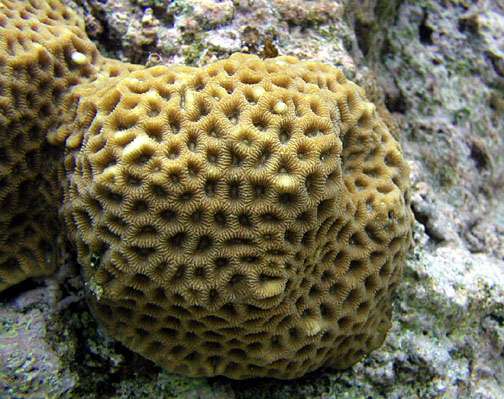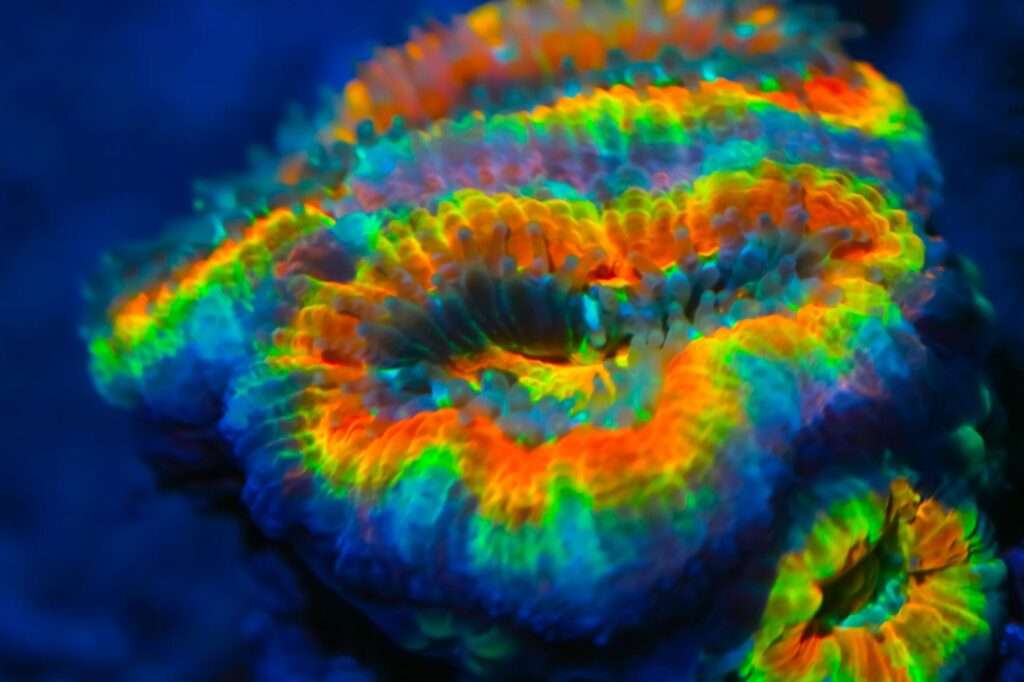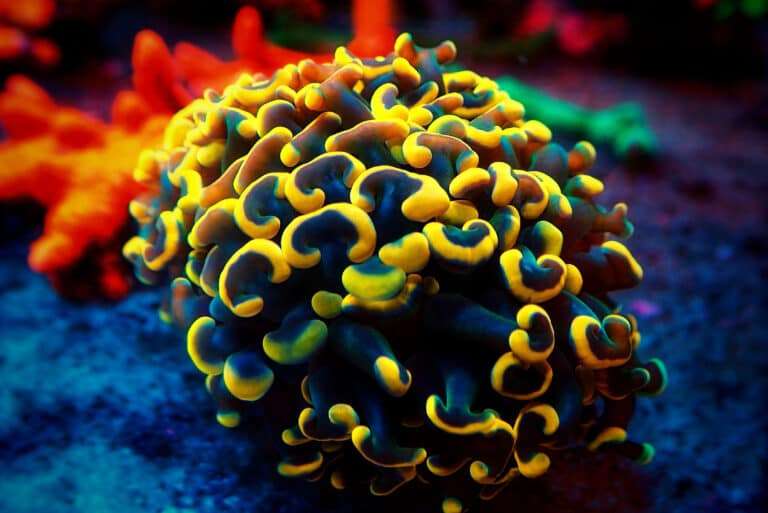
The Favia genus and the Favites corals are lovely large polyp stony (LPS) corals. Although the Favia genus and the Favites Coral are sometimes mistaken, with a little effort, it is actually rather simple to tell them apart. In contrast to the walls of the Favia genus, the walls of corallites—raised areas in which polyps reside—are shared or merged in the Favites species. Therefore, on the Favia corals, you can see two “sets” of walls between the calices when the tissue is recessed at night (centers). The walls of Favites Corals are fused, taller, and have a more irregular, polygonal shape.
Habitat
Link first defined the Favites genus in 1807. Since it takes a long time to reproduce in captivity, the Favites genus is still being harvested from oceanic reefs.
The Favites genus covers a relatively vast range, extending from the Red Sea to the point of Africa and then eastward to the West Indies and the Indo-Pacific. The Pitcairn Islands and the northern two thirds of Australia form the eastern extension’s southern, northern, and eastern borders, respectively. On the reef, the Favites genus inhabits a variety of environments. Even though the illumination in these habitats varies, the water circulation is all quite turbulent. At night, they eat by spreading their tentacles and deflating their tissue.
Morphology
In the wild, the Favites genus develops huge, flat, dome-shaped colonies that can enlarge to over 3 feet (1 m) in diameter. The Favites Corals’ corallites, or skeletal wall structure, are cerioid, or share shared walls. Favia corals, on the other hand, do not share walls and are less difficult to fragment than Favites. The tissue of the Favites genus enlarges during the day. Because it can be difficult to identify the corallite walls apart, some Favites may initially appear to be Favia corals. However, the tissue partially contracts at night, exposing the differences in the walls. The orange, green, yellow, brown, cream, and red tones of the Favites Corals are comparable to those of the Favia genus. Additionally, those hues can be combined, with the “walls” being one shade and the “calices,” “middles,” another. The Favites Corals can occasionally shine brighter than the Favia Corals. The feeding tentacles of Favites Corals, which extend at night, are tapering tubular polyps. Around the recessed mouth area of each calice, these are arranged in a single row. There are 3 sizes of calices:
If not disturbed for several months, the Favites Coral will eventually stick to whatever they are set on.
In Captivity

- Feeding
The Favites genus has evolved a number of feeding techniques. They get some of their nutrients from a marine alga called zooxanthellae through a symbiotic interaction. They can also take in dissolved organic substances and planktonic creatures as well as food particles from the water column. Give mysis diced fish or shrimp meat and other items of a comparable size. They do require feeding at least once a week, and regular feedings help them grow very well.
- Social Interactions and Compatibility
The Favites genus is hostile to other coral species. Due to the length of their nighttime sweeper tentacles, they must be kept apart from other corals.
Table





